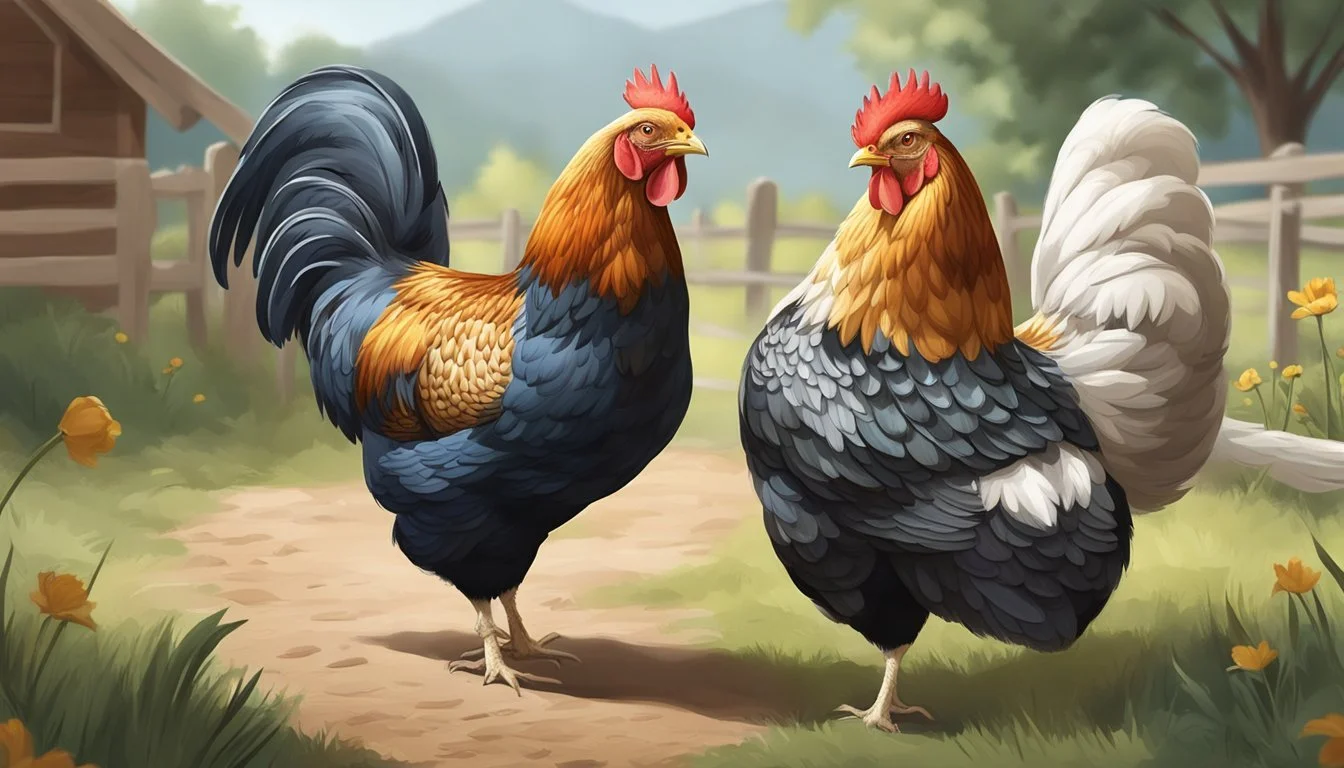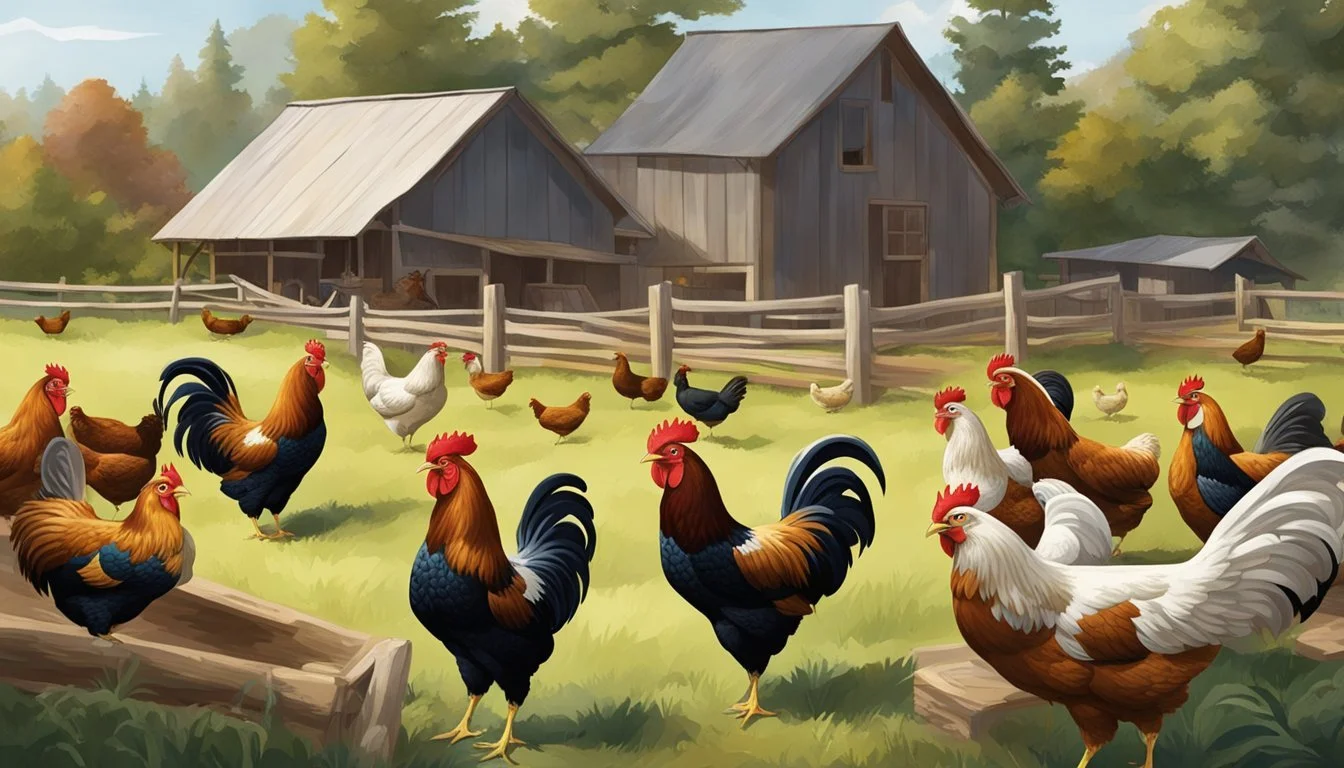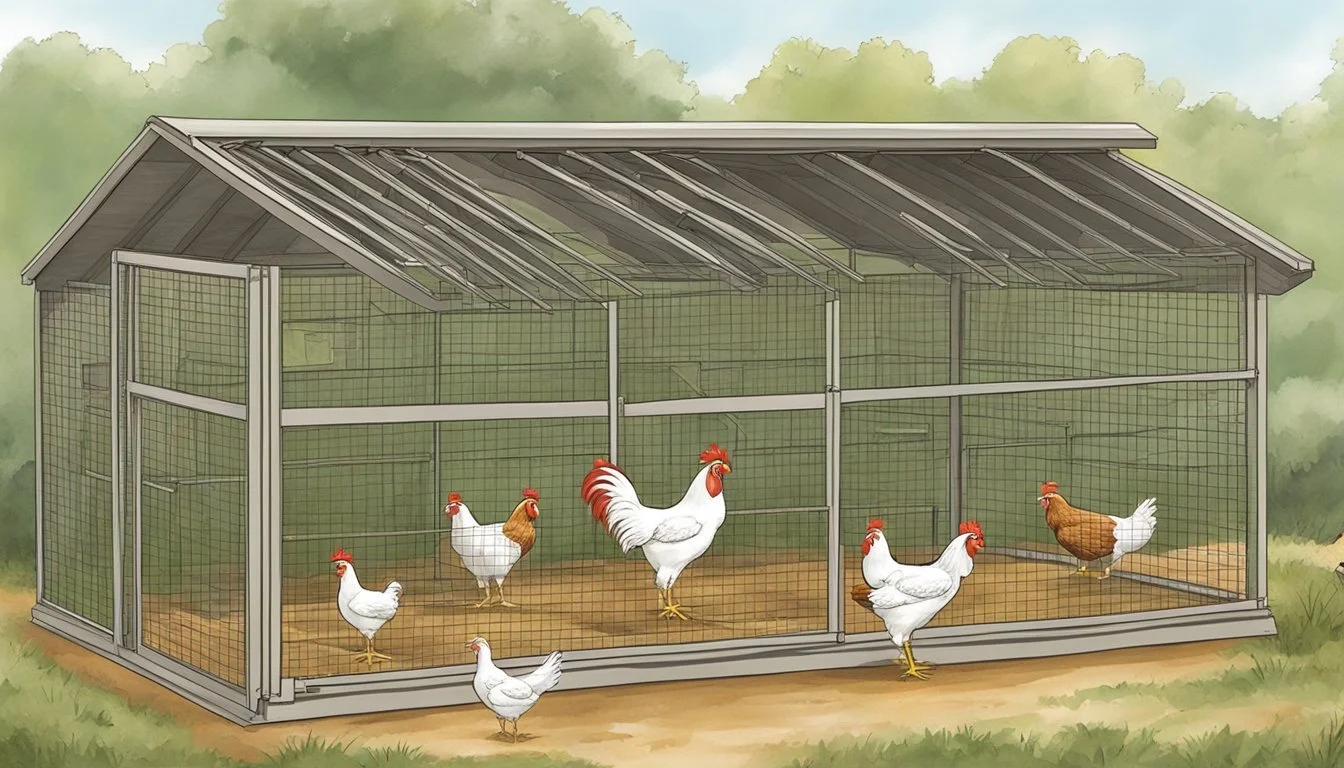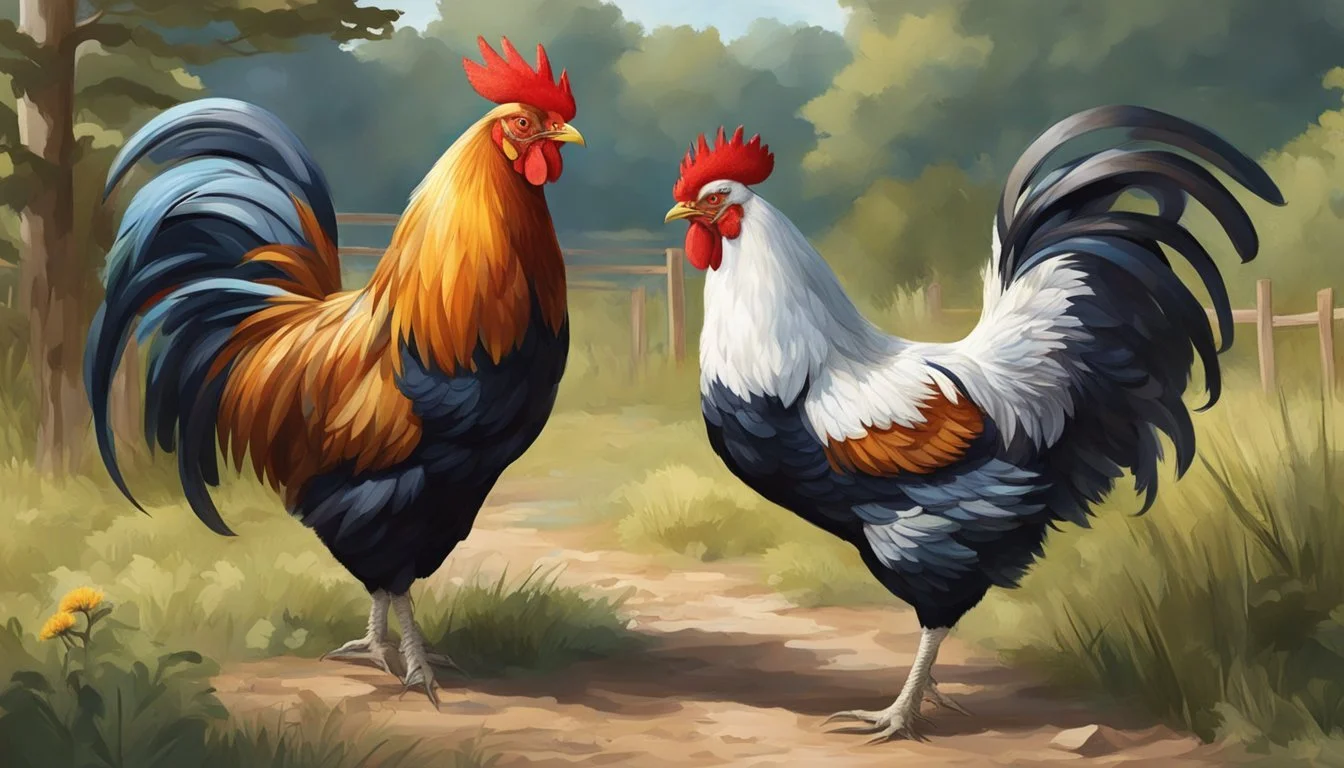How to Use a Poultry Saddle
Shielding Hens from Rooster Scratches Explained
Poultry saddles are essential tools in the homesteader's arsenal, designed to protect hens from the wear and tear caused by rooster mating behavior. Roosters naturally have sharp spurs and claws, which can inadvertently cause feather damage and skin abrasions to hens during the mating process. These specialized garments act as a barrier, shielding the hen's back and preserving the integrity of their feathers.
The use of these saddles is straightforward and can significantly improve the welfare of hens in a mixed flock. Saddles are fitted onto a hen by slipping her wings through the appropriate openings and securing the straps so that they do not impede the bird's natural movement. The saddles must be snug to ensure they stay in place, yet loose enough to allow comfortable respiration and movement. Proper fitting is essential to prevent potential discomfort or entanglement.
In maintaining a flock's dynamic, homesteaders must observe and address the physical interactions between roosters and hens. By incorporating poultry saddles, they can mitigate the risks of injury and stress, allowing hens to continue their egg production and daily activities without the added risk of harm from the rooster’s natural mating practices. Poultry saddles offer a practical solution for safeguarding the well-being of hens, contributing to a healthier and more harmonious coexistence within the flock.
Understanding Poultry Saddles
In the realm of poultry care, poultry saddles are a critical accessory designed to shield hens from scratches and injuries often caused by rooster's mating behavior. These protective garments not only mitigate stress in hens but also contribute to their healthier lifestyle.
The Role of Poultry Saddles in Protecting Hens
Poultry saddles serve a primary function: protection for hens during mating. The mating process can be rough, with roosters gripping and scratching the hens' backs, leading to feather loss and skin abrasions. This can cause significant stress for the hens, potentially affecting their health and egg-laying abilities. Saddles act as a barrier, absorbing the damage that would otherwise harm the hen's sensitive skin.
Protection: Prevents back injuries and feather wear from rooster's nails and spurs.
Stress Reduction: Diminishes the hens' stress levels, reducing the chances of them becoming fearful or aggressive.
Health Maintenance: By preventing wounds, poultry saddles maintain the skin integrity of the hens, reducing the risk of infections and promoting a healthier flock.
Types of Poultry Saddles and Materials
Poultry saddles are available in various styles and materials to suit different needs. The most common types include:
Standard Saddles: Cover the back and sides, while leaving the chest and abdomen exposed for ease of egg laying.
Full Coverage Saddles: Provide additional coverage for hens that need extra protection.
Regarding materials, durability and comfort are paramount. Commonly used materials include:
Canvas: Known for its durability and ability to provide substantial protection.
Cotton: Often favored for its breathability and comfort.
Synthetics: These can offer water resistance and are generally easier to clean.
A well-designed poultry saddle will be adjustable to fit the hen comfortably, reducing the chance of it slipping or causing the hen any discomfort. It is vital to select the appropriate type and material for the specific needs of one's poultry to ensure the most effective protection.
Assessing Your Flock's Needs
Before safeguarding your hens with poultry saddles, a thorough assessment of your flock's needs is imperative. This will ensure that interventions are both timely and appropriate, aimed at maintaining the wellbeing of your chickens.
Identifying Rooster Scratch Risks
In flocks where roosters are present, one should observe the interaction between roosters and hens closely. Rooster scratches often manifest as feather loss or skin abrasions on the hen's back and can be a clear indicator of overly vigorous mating behavior. Key signs to look for include:
Bald patches or visible wounds on hens' back and sides
Feathers scattered around the coop or run area
Hens evading roosters or displaying avoidance behaviors
Monitoring Hen Health and Stress Levels
The health and stress levels in chickens can be significantly impacted by rooster scratches and the resulting injuries. Stress in chickens may reduce laying frequency and produce eggs of poorer quality. To assess their health and stress levels, scrutinize the following:
Egg production: A decline in the number of eggs laid could signal health or stress issues.
Behavior: Stressed hens may exhibit changes in normal behavior, such as reduced foraging or increased aggression.
Physical appearance: Inspect for signs of recovery or deterioration in feathering and wound healing.
By carefully analyzing these aspects of your flock, you can better determine the necessity of implementing poultry saddles to protect your hens.
Choosing the Right Poultry Saddle
When selecting a poultry saddle, it is crucial to prioritize fit and comfort to ensure the safety and protection of the hen. Properly fitted saddles provide necessary protection without compromising the hen's ability to lay eggs comfortably.
Fit and Size for Different Chicken Breeds
Different chicken breeds come in various sizes, and so do poultry saddles. It is essential to measure the hen accurately for a proper fit. Saddles typically come in small, medium, and large sizes to accommodate breeds ranging from bantams to large fowl. Here's a basic guideline to help determine the correct saddle size:
Small: Bantam-sized birds or younger chickens.
Medium: Average-sized hens such as Plymouth Rocks or Sussex.
Large: Bigger breeds like Jersey Giants or Brahmas.
It is necessary to measure from the neck to the tail base and across the widest part of the back to ensure full protection while allowing ample space for egg laying.
Considerations for Comfort and Safety
Material: The saddle should be made of durable yet breathable fabric to prevent overheating and allow sufficient air circulation.
Straps: Adjustable straps are ideal for a secure fit that doesn't impede movement. Elastic straps should fit snugly but not too tight to avoid discomfort.
Coverage: A well-designed saddle will cover the back and sides while leaving the chest and belly area exposed, striking a balance between protection and the hen's comfort.
Maintenance: Look for saddles that are machine washable for easy cleaning, as hygiene is critical for the health of the hen.
By considering these factors, owners can ensure their hens are protected from scratches and pecking without affecting their welfare or egg-laying capabilities.
Poultry Saddle Application
Protecting a hen's back from rooster scratches is essential for poultry health. The poultry saddle serves this purpose well when applied correctly.
Preparing Your Hen for the Saddle
Before introducing a poultry saddle, it's important that the hen is calm and ready to be handled. For beginners handling pullets or laying hens, it’s best to approach the hen in a quiet, non-threatening manner. They may want to gently pet the hen to reduce stress, ensuring the process is as smooth as possible.
Step-by-Step Guide to Fitting a Poultry Saddle
Step 1: Gently pick up the hen, supporting her chest and tail base, and place her between your knees to keep her steady.
Step 2: Hold the poultry saddle by the straps, with the larger protective area facing downwards.
Step 3: Carefully slide one of the hen's wings through the corresponding hole in the saddle.
Step 4: Enlarge the opposite hole and guide the other wing through, ensuring that both wings are comfortably in place without any pinching.
Step 5: Adjust the saddle so it's centered on the hen's back, covering the areas prone to rooster clawing.
Step 6: Secure the straps beneath the hen’s belly without restricting her movement. The straps should be snug but not tight to avoid discomfort.
Remember to check the fit frequently, as an incorrectly fitted saddle can cause distress or injury to the hen.
Maintaining the Poultry Saddle
Proper care and timely replacement of poultry saddles are critical for ensuring the longevity of the garment and the protection of your hens. They require regular cleaning to maintain hygiene and inspection to assess their condition.
Cleaning and Care Instructions
To clean a poultry saddle:
Remove the saddle from the hen gently, ensuring not to cause the hen any stress.
Inspect the saddle for any damage or excessive wear.
Wash the saddle using a mild detergent and warm water to remove dirt and droppings.
Hand washing is recommended to prevent damage.
If machine washing, use a gentle cycle in a mesh laundry bag.
Air dry the saddle completely before placing it back on the hen.
Avoid direct sunlight as it may cause the fabric to fade.
Frequency of Cleaning: Ideally, clean the saddles weekly or more often if they become soiled quickly.
When to Replace a Poultry Saddle
Replace a poultry saddle when:
Visible damage is detected, such as tears or frayed edges which cannot effectively protect the hen.
The saddle material becomes thin or non-supportive due to wear.
Fastenings or straps are broken or can no longer be adjusted for a secure fit.
Poultry saddles have a variable lifespan, and the cost-effectiveness of replacement should be considered if damages frequently occur. Monitoring and maintaining your saddles can prevent unexpected costs and ensure continuous protection for your flock.
Benefits of Using a Poultry Saddle
Poultry saddles provide a practical solution for protecting backyard hens. They serve two primary functions: shielding hens from injuries and supporting overall hen health and egg production.
Protection from Pecking and Mating Injuries
A poultry saddle acts as a barrier between the hen's feathers and the rooster's claws, significantly reducing the occurrence of skin abrasions and feather damage. These fabric shields are designed to cushion the hen's back during mating, preventing the rooster from scraping the hen's skin, which can lead to wounds or infections. With injuries mitigated, hens maintain better feather coverage, which is critical for their protection against the elements and as part of their natural defense mechanisms.
Contribution to Egg Quality and Hen Health
Implementing the use of poultry saddles translates into a less stressful environment for the hen, which is conducive to healthier hens. Healthier hens are known to produce eggs of higher quality. The protection provided by saddles stops the cycle of pain and stress associated with mating injuries. As stress levels decrease, the hens' overall well-being improves, often resulting in a more consistent egg-laying pattern with better shell integrity and yolk quality. Moreover, the reduced stress contributes to a stronger immune response within the flock, fostering a thriving and productive homestead.
Integration into the Chicken Coop Environment
When integrating poultry saddles, one must consider the adaptability of the flock and ensure that the saddles balance safety with the chickens' freedom of movement.
Saddle Adaptation for the Flock
When introducing poultry saddles, it's crucial for the flock to acclimate to their new attire without it disrupting their daily activities within the coop. The flock should be monitored to ensure that each hen adapts to the saddle without agitation. This includes observing their interaction with bedding material and dust baths, which are essential for chicken health and cleanliness. Bedding should remain uncompromised, as it provides cushion and absorbs waste. Dust baths should be spacious enough to allow chickens with saddles to bathe and maintain their feather health.
Balancing Safety and Freedom of Movement
The design of the poultry saddle should not hinder a chicken's movement or access to coop amenities. It is pivotal that the safety provided by the saddle does not detract from the hen's ability to:
Roam freely within the coop space.
Engage fully in natural behaviors like preening, nesting, and foraging.
A well-fitted saddle protects the chicken's back from scratches and pecks while maintaining sufficient space under the wings to prevent chafing and allow for proper ventilation. Regular inspection of the fitting will ensure that the saddle stays secure without limiting the hen's mobility or comfort.
Common Challenges and Solutions
When using poultry saddles to protect hens from rooster scratches, homesteaders might encounter a couple of challenges, including ensuring a proper fit to prevent slippage and addressing weather and durability concerns for the saddles’ longevity.
Addressing Saddle Slippage and Fit Issues
To prevent poultry saddles from slipping, proper sizing is essential. Saddles come in various sizes to fit different breeds and sizes of hens. When a saddle is too large, it can slip to the side, reducing its efficacy and potentially causing discomfort. To ascertain the fit:
Measure the hen's back from neck to tail.
Compare the measurements to the size chart provided by the manufacturer.
For additional security, some saddles offer adjustable straps that can be tightened to ensure a snug fit, thus reducing the potential for slippage. Regular checking and adjusting of straps are part of essential maintenance to maintain comfort and protection.
Dealing with Inclement Weather and Durability Concerns
Durability and protection from the elements are significant when selecting a poultry saddle. The material should be:
Water-resistant: to keep the hen dry during rain.
Breathable: to prevent overheating and discomfort in warm weather.
Materials such as canvas or denier nylon strike a balance between durability and comfort. These materials often come at a higher cost, but they provide long-term savings by requiring less frequent replacements. Regular inspection for wear and tear is suggested to ensure that the saddle continues to provide adequate protection.
Supplementary Care for Rooster-Hen Interactions
In caring for poultry, safeguarding the hens from rooster damage during mating is essential. This requires attention to the rooster's behavior and supportive practices to maintain a healthy flock environment.
Managing the Rooster's Mating Behavior
A rooster’s natural instinct to establish a pecking order can lead to aggressive mating behavior, which may cause harm to hens. Water sprays can act as a deterrent and help to manage excessive mounting behavior. Feed distribution methods should be evaluated to ensure that the rooster does not become overly dominant at feeding times, as this dominance can carry over to mating behavior.
Supportive Practices for a Healthy Flock
To support the overall wellbeing of the flock:
Chicken Feed: Ensure a well-balanced diet to keep all chickens, especially roosters, in good health. Proper nutrition can reduce aggressive tendencies.
Pecking Order: Maintain a stable flock structure to minimize disruptions to the pecking order, which can stress the birds and trigger aggression.
By implementing these practices, homesteaders can effectively minimize the negative impact of rooster mating behavior and promote a healthy environment for their poultry.
Conclusion
In this guide, the value of poultry saddles has been clearly outlined, underscoring how these implements are more than just accessories; they are instrumental in safeguarding the well-being of hens on a homestead.
Recap of Poultry Saddle Benefits
Poultry saddles offer a range of advantages that contribute significantly to the health and productivity of hens within a homesteading environment. The primary benefits include:
Protection: They act as a barrier against scratches and injuries from rooster spurs during mating, thus reducing stress and promoting feather regrowth.
Humane Treatment: By preventing physical harm, poultry saddles ensure hens live in a more humane condition, conducive to their welfare.
Egg Production: A hen free from injuries and stress is more likely to maintain consistent egg production, which is crucial for homesteading success.
Disease Prevention: Saddles can help prevent skin infections by keeping wounds covered, mitigating the risk of disease spread within the flock.
Final Thoughts on Hen Protection and Welfare
A homesteader’s commitment to hen protection is a testament to the practice of humane and responsible animal stewardship. The use of chicken saddles is a straightforward yet impactful measure that serves to enhance the overall welfare of the flock. As they integrate these saddles into daily farming routines, homesteaders can take pride in the active steps they are taking to promote a safe and productive environment for their poultry.







